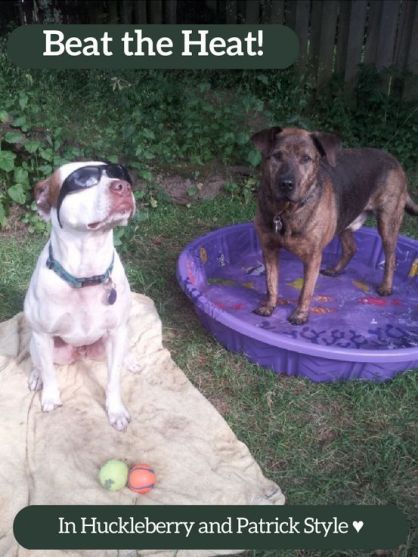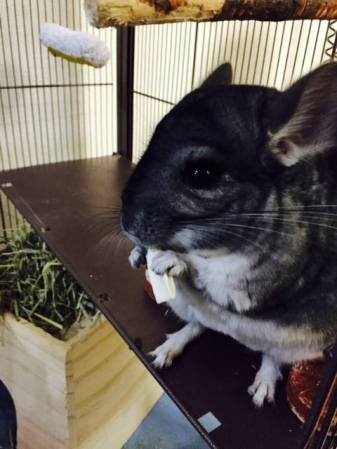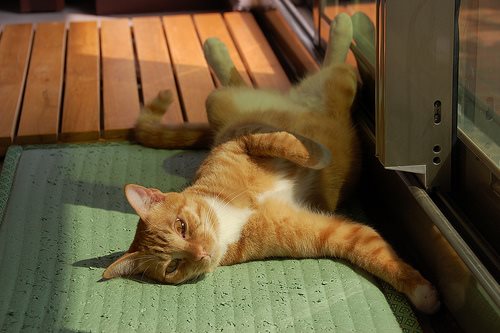Summer Heat and Your Pet

A record breaking heat wave is expected to arrive in Oregon this week!
We have some ideas below on how to help keep your pets cool, and when to be concerned about heat stroke.
Strategies to avoid heat stroke;
- Make sure pets have unlimited access to cool water.
- If outside, be sure pets have access to shade.
- Limit exercise to cool mornings and evenings.
- Asphalt can get very hot! Try to keep your pet off of hot asphalt; not only can it burn paws, but it can also increase body temperature and lead to overheating
- Kiddie pools can be a great idea for dogs – just ask Patrick 🙂
- Brush matted hair and old dead coat from pets to help keep them comfortable. Shaving the hair off isn’t something we recommend, since the layers of healthy hair help to protect pets from sunburn and overheating.
- Offer a cool damp towel out of the freezer for cats to lie on.
Watch for signs of heatstroke –
Heat stroke happens when a dog or cat cannot maintain their core body temperature of 101 to 102 degrees. If their temperature rises to 105 degrees or higher all body systems begin to fail.
Pets with flat faces, like Bulldogs and Persian cats, are more susceptible to heat stroke. These pets, senior pets, and overweight pets or those with heart or lung disease, should be kept in cool in air-conditioned rooms as much as possible.
Signs of heat stroke in dogs and cats include;
- Excessive panting.
- Thick ropey saliva
- Dry/tacky gums
- Blood red gums early on that will turn blue gray as shock sets in.
- Lack of coordination
- Vomiting
- Seizures.
- If heat stroke is suspected, transport your pet to the nearest veterinary facility immediately.
Home treatment of very mild cases of heat stroke would include;
- Moving your pet into the shade or an air-conditioned area.
- Apply cold wet towels to the pets head, neck, chest, legs and belly, or run cool (not cold) water over them. Placing the pet in a kiddie pool or bathtub of cool water is ideal providing there is no risk of the pet accidentally inhaling and choking on the water.
- Let them drink small amounts of cool water.
- Use a rectal thermometer to check the pets temperature and if it has not returned to 102 or lower, transport to a veterinary medical facility is advised.
Considerations for small pets such as Guinea Pigs, Chinchillas, and Rabbits – 
Our small pets are also susceptible to heat stroke in hot weather.
How to try and avoid heat stroke in small pets;
- Make sure they are in a shaded and well ventilated area. Access to a low breeze from a fan is a simple way to provide ventilation.
- Be sure they have easy access to cool water at all times.
- Cool, fresh vegetables may help them with comfort and hydration.
- Freeze water in a gallon milk jug or 2 liter soda bottle and place it in the area of the pet. Often times they will lie down beside it to help cool themselves off. Another option is a sealed bag of ice with a pie pan or terracotta saucer over the top of it. The pet can sprawl their belly across the plate and gain relief from the heat.
- Place cool tiles on the floor of their living quarters for them to lie on.
- Dampen the ears with cool (not cold) water from your fingertips or a towel.
Signs of heat stroke in small mammals include;
- Drooling.
- Panting.
- Weakness.
- Unable to stand or walk.
- Twitching/seizures.
- Transport to your nearest veterinary facility if heat stroke is suspected.

Relax and enjoy the summer sun with your pets – just be aware of the little details that can prevent big heartbreak.
Happy summer from Team OVH!